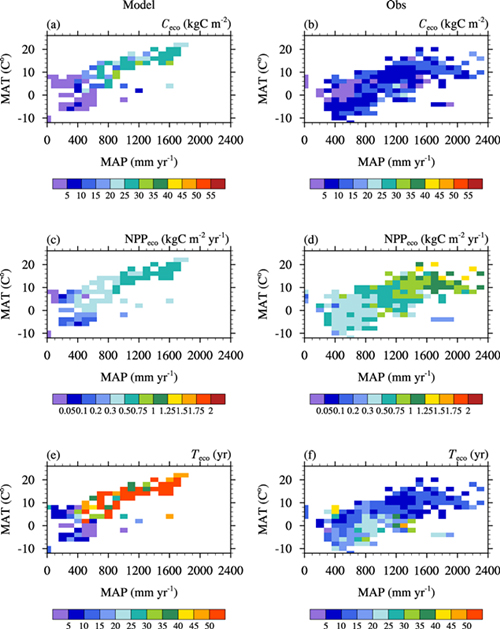Evaluation of the Individual Allocation Scheme and Its Impacts in a Dynamic Global Vegetation Model
Date:2016-02-26
Dynamic global vegetation models (DGVMs) have grown to become useful tools in investigating the mechanisms involved in terrestrial ecosystem and land–atmosphere interactions. Most current DGVMs are able to reproduce the global distribution of natural vegetation, as well as the relationship between vegetation distribution and climate conditions. However, when predicting the responses of vegetation to climate change, existing DGVMs produce a wide variety of results. Such differences may derive from simplifications in the model’s representation of certain ecological processes, or a poor basic understanding of such processes in the first place.
In work recently published in Atmospheric and Oceanic Science Letters (Song et al., 2016), the individual carbon allocation scheme for trees, the core of DGVMs, was evaluated using the Institute of Atmospheric Physics-Dynamic Global Vegetation Model, version 1.0 (IAP-DGVM1.0) as a test-bed. The observational data were from the Chinese Ecosystem Research Network (CERN) (http://159.226.111.42/pingtai/cernc/).
The results of the study showed that, in the model, along with individual growth, annual allocation proportions of net primary production (NPP) to leaf (Fleaf; %) decreased from 45% to around 28%, and to sapwood (Fsap; %) grew from 10% to almost 43%. However, in the observational data, the indication was that larger individuals could have higher Fleaf and lower Fsap. In addition, based on the frequency distribution of Fleaf, about 86% of the simulated core forest areas had individuals with Fleaf below 35% in China, while only about 36% of observational forests had a mean Fleaf below 35%. Such results implied that Fleaf was seriously underestimated. Consequently, IAP-DGVM1.0 underestimated individual leaf biomass for all tree plant functional types, and overestimated individual stem biomass for all of them except boreal needleleaf evergreen tree.

The distribution of the simulated (a) ecosystem biomass (Ceco; kgC m?2), (c) ecosystem net primary production (NPPeco; kgC m?2 yr?1), and (e) residence time of carbon in living biomass for the ecosystem (Teco; yr). Panels (b, d, f) refer to the Ceco, NPPeco, and Teco obtained from CERN data, respectively.
It was also found that, given IAP-DGVM1.0 greatly overestimated Fsap in general, the simulated ecosystem biomass (Ceco) was higher than observed, and the largest bias existed in temperate regions. Crucially, leaf is the sole organ that produces photosynthesis in the model. Therefore, underestimating Fleaf may result in an underestimation of gross primary production, and subsequently NPP. The overestimation of Ceco and underestimation of NPP together lead to relatively higher residence times of carbon in living biomass.
It should be emphasized that, given that this study is based only on IAP-DGVM1.0, it should also be repeated in other DGVMs with similar individual allocation schemes, such as LPJ-DGVM, CLM3.0-DGVM, IBIS, and ORCHIDEE.
Reference
Song, X., X.-D. Zeng, and F. Li. 2016. Evaluation of the individual allocation scheme and its impacts in a dynamic global vegetation model. Atmospheric and Oceanic Science Letters 9(1): 38–44.
Contact: Dr. SONG Xiang, songxiang@mail.iap.ac.cn
